I always spend few extra days in Istanbul
While our itineraries cover the major sites in the Sultanahmet area of Istanbul, there are many other attractions in this fascinating city. I always spend few extra days in Istanbul. Here are some of our favorites:
Walkable from Sultanahmet
Great Palace Mosaic Museum
The museum is located inside the Arasta Market in the Blue Mosque Complex, The mosaics found in the southeastern part of the remains of the Eastern Roman Grand Palace cloister in 1935 are both artistic and visually stunning due to their abundance of imagery. In the Great Palace Mosaics Museum, works dating between 450 and 550 AD do not have religious content. The picturesque scenes, drawn from daily life, nature, and mythology, remain vibrant.
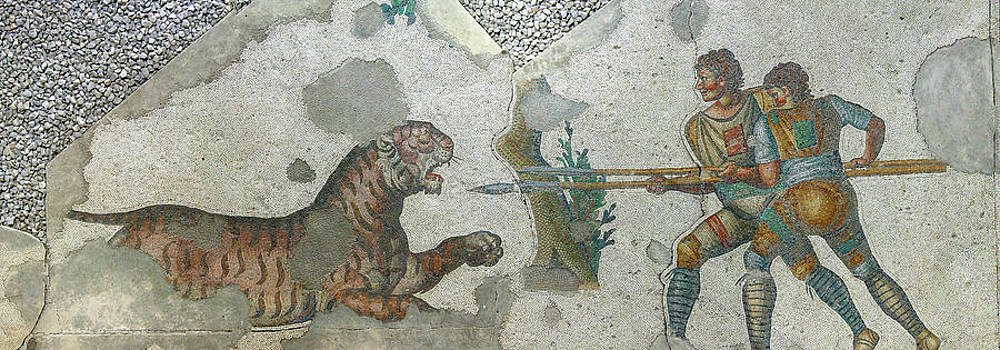
The greatest pieces of mosaics at the museum are scenes illustrating griffin eating lizards, elephants fighting tigers, mares nursing colts, geese leading children, men milking goats, children feeding donkeys, young girls bearing pitchers, bears eating apples, and hunters battling tigers. There are 150 human and animal figures on the mosaics, as well as 90 distinct subjects.
This market area also provides great views of the lighting on the Blue Mosque each evening.
Istanbul Archaeological Museums
When you enter the Topkapi Palace via its Main gate, (no entry fee there), you can reach the museums by going down the road on the left side.
It is a group of three museums (Archaeological Museum, Ancient Orient Museum, and Tiled Kiosk Museum). The museums were built in Istanbul in the late Ottoman era and comprise some of most comprehensive archeological collections in the world.
Archaeological Museum
Be sure to find:
- The “Alexander Sarcophagus” is a Hellenistic stone sarcophagus adorned with bas-relief carvings of Alexander the Great. Classical Greek sculptors created the marvelous Hellenistic sculptures in the Athenian idiom during the late 4th century BC. The most significant sculptured scene is of Alexander the Great attempting to battle the Persian king, Darius III, as Darius flees the battle of Issus in 333 BC.
- The Kadesh / Egyptian–Hittite Peace Treaty is the oldest known surviving peace treaty and the only ancient Near Eastern treaty for which both sides’ versions have survived. The peace treaty is the earliest example of any written international agreement of any kind. It followed the Battle of Kadesh fought some sixteen years earlier. The text concludes with a binding oath.
- The “Siloam Inscription” or “Shiloah Inscription” (כתובת השילוח) is a passage of inscribed text found in the Siloam tunnel, in the City of David in the East Jerusalem neighborhood of Shiloah.
- The “Tabnit Sarcophagus” was created for King Tabnit of Sidon, a Phoenician ruler. Carved in the early 5th century BC, has two separate inscriptions, one in Egyptian hieroglyphics and one in the Phoenician script. Discovered in 1887 at a Necropolis near Sidon together with the Alexander Sarcophagus and other related sarcophagi. Tabnit’s body was found floating perfectly preserved in the original embalming fluid
The Tiled Kiosk Museum
The Sultan Mehmed the Conqueror’s (Mehmed II) pleasure palace or kiosk was dubbed Glazed Kiosk (Sırça Kösk) due to its polygonal pillars and stone-framed bricks, which were inspired by Persia. Its facade is reminiscent of Persian architecture, with polygonal pillars and stone-framed bricks. The entrance consists of a marble arcade containing six columns. It has six rooms, each of which displays a sample of Turkish ceramics and tiles from the Selcuk and Ottoman periods. The middle salon in the kiosk museum is adorned with mosaic tiles.
The Museum of Ancient Orient
Marvelous large basalt wall reliefs and stelae from Urartuwhich date back to the Hittite Empire period can be seen. (A sample of what’s seen on the Museum of Anatolian Civilization in Ankara) Highlights include:
- A Code of Hammurabi tablet
- a statue of Shalmaneser III
- wall reliefs from the north-west palace at Nimrud
- Babylonian Processional Street wall reliefs (lion, sirrush, and auroch reliefs)
- Another copy of the Kadesh treaty
- a complete ancient Egyptian grave’s contents
Turkish and Islamic Arts Museum
is in Sultanahmet Square just off the hippodrome in Fatih district of Istanbul, Turkey.
Constructed in 1524, the palace was previously the administrative center of Pargalı Ibrahim Pasha, who was Suleiman the Magnificent’s second grand vizier. Calligraphic pieces, tilework, and rugs are among the ethnographic objects on display, as well as examples of Islamic script. In addition to demonstrating the various periods and regions in history, the rooms are also recreated.
Museum of Turkish Calligraphy & Sahaflar Carsisi (book bazaar)
The Bayezid II Complex was created between 1506 and 1508 and was once the medrese of Bayezid II’s School. It houses 3,121 items, most of which are Islamic calligraphic art. In addition, the nearby Beyazit Mosque is worth visiting. The book bazaar (Sahaflar Carsisi) on the other side of the mosque has a large selection of antique and modern miniatures, Qurans, and calligraphy.
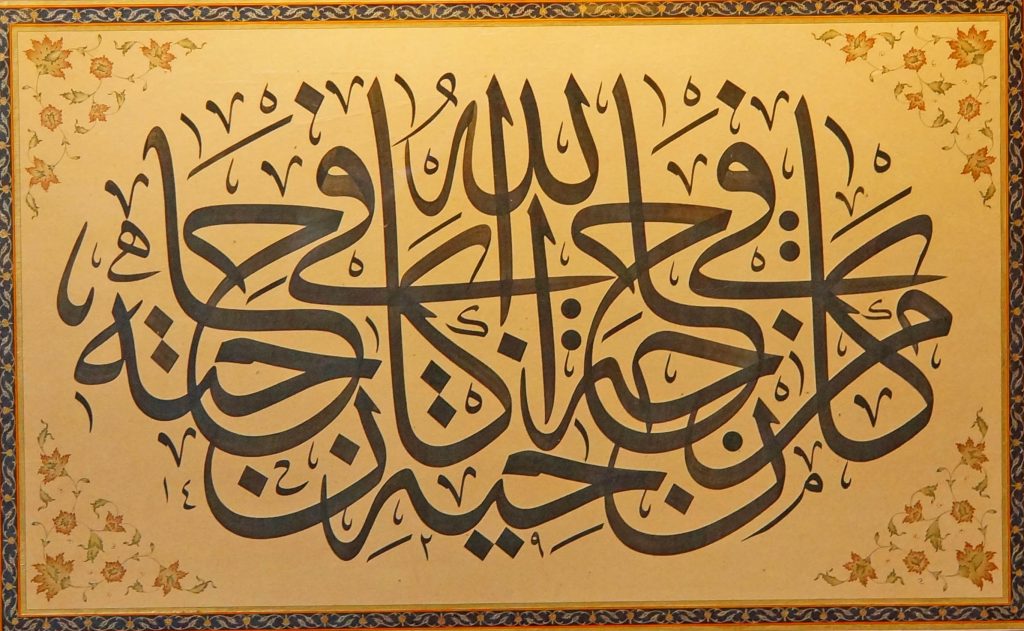
Near the city walls
Byzantine Walls – Theodosian Wall
Fascinating ancient ramparts constructed nearly two millennia ago defend this historic city.
One of the most elaborate fortification systems of ancient times, the Walls of Constantinople were built by Constantine the Great to protect the city against attacks by both land and sea. They defended his newly established capital of the Eastern Roman Empire.
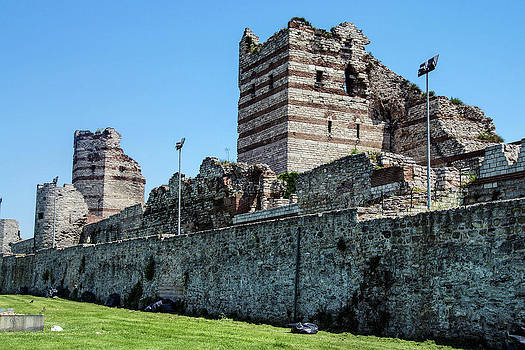
Shortly after the founding of the city in 330 A.D., work began on a series of land walls to the west, where the peninsula joins the European continent. A century later, the Theodosian Wall was constructed farther to the west, enlarging the city significantly. These are perhaps the most interesting of the surviving Istanbul walls.
Many of original ramparts and gates still exist, and some have also been restored. Some of the restored sections of the wall are open for climbing, often via steep stone stairs (with no railings), for a bird’s eye view of this sprawling city.
Church of the Holy Savior in Chora ( Kariye Müzesi, Kariye Camii)
The Church of the Holy Saviour in Chora (Turkish: Kariye Kilisesi or Kariye Museum) is one of the most beautiful surviving examples of a Byzantine church. In the Edirnekapi area in the belediye of Fatih, it’s off the regular tourist path, but well worth a special visit. The interior of the building is covered with fine mosaics and frescoes.

Sometimes magnificent works of art are preserved by a quirk of fate. In the era of the Byzantine Komnenoi dynasty, it served as the court chapel for important religious ceremonies, thanks to the nearby Palace of Blachernae. Chora Church (Chora Kirke) was destroyed during the Latin invasion (1204-1261) and repaired in the reign of Andronikos II (1282-1328)
After continuing to serve as a church following the conquest of Istanbul in 1453, the building was converted into a mosque in 1511 by Vizier Hadim Ali Pasha. Its artwork was whitewashed and was restored as a museum in 1948.
The mosaics and frescoes in the building are among the oldest and finest surviving Byzantine mosaics and frescoes; they were discovered and restored after the building was secularized and converted into a museum.
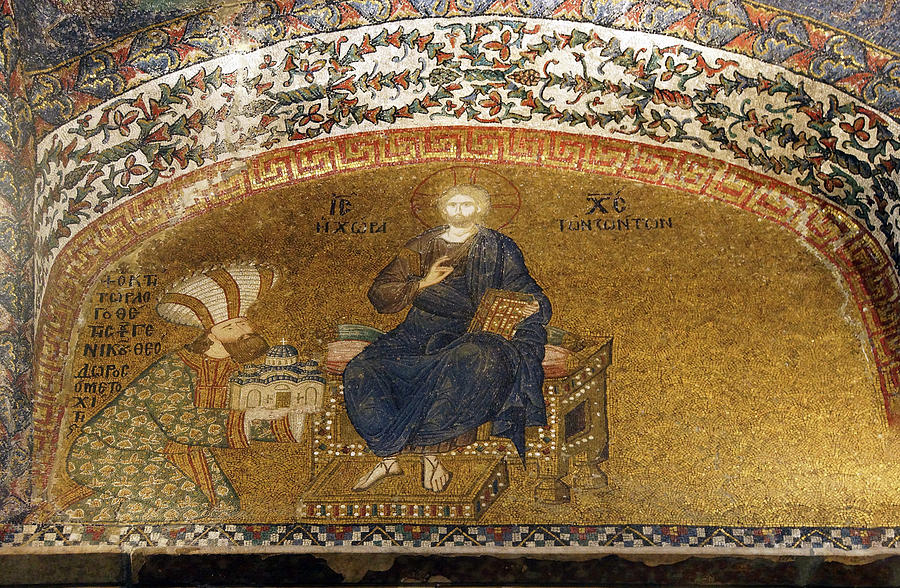
The mosaics are breathtaking. dating from the last period of the Byzantine painting (14th century). The characteristic stylistic elements in those mosaics and frescoes are the depth, the movements and plastic values of figures and the elongation of figures.
The first ones are those of the dedication, to Jesus and Mary. Then come the offertory ones: Theodore Metochites, builder of the church, offering it to Jesus.
The two small domes of the inner narthex have portraits of all Jesus’s ancestors back to Adam. Another series outlines Mary’s life, and another, Jesus’s early years. Yet another series concentrates on Jesus’s ministry.
In the nave are three mosaics: of Jesus, of Mary as Teacher, and of the Dormition of Mary
South of the nave is the Parecclesion, a side chapel built to hold the tombs of the church’s founder and relatives. The frescoes deal with the theme of death and resurrection.
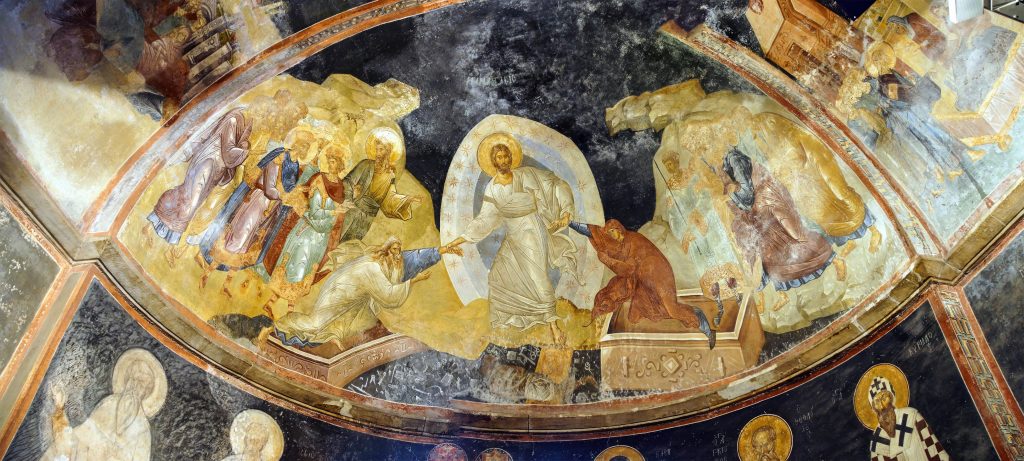
Across the Golden Horn
Taksim Square
You can take the metro directly to Taksim from Sultanahmet. But, the longer, but most interesting approach starts at the Galata bridge and crosses the Golden Horn. Then a funicular tunnel ride takes you close to the Galata Tower from where you can walk the short distance to Taksim Square, a modern pedestrian street with shops, restaurants and the Pera Palace Hotel where Agatha Christie is said to have written her famous mystery novel “Murder on the Orient Express.”
Çiçek Pasajı (Flower Passage) area hosts a number of seafood restaurants for lunch or dinner
Askeri Army Museum
is a short walk from the north end of Taksim. One of the world’s best military museums It presents the history of war and weapons from the beginnings of the Ottoman Empire to the founding of the Turkish Republic. It holds striking historical treasures such as the chain that the Byzantines stretched across the mouth of the Golden Horn to keep out Mehmed II‘s navy in 1453 during the siege of Constantinople. On the first floor find a unique collection of helmets and armor, as well as the sections allocated to firearms and great field tents used by sultans on their campaigns. On the upper floor there are rooms devoted to the World War I battle of Gallipoli, and the Turkish War of Independence
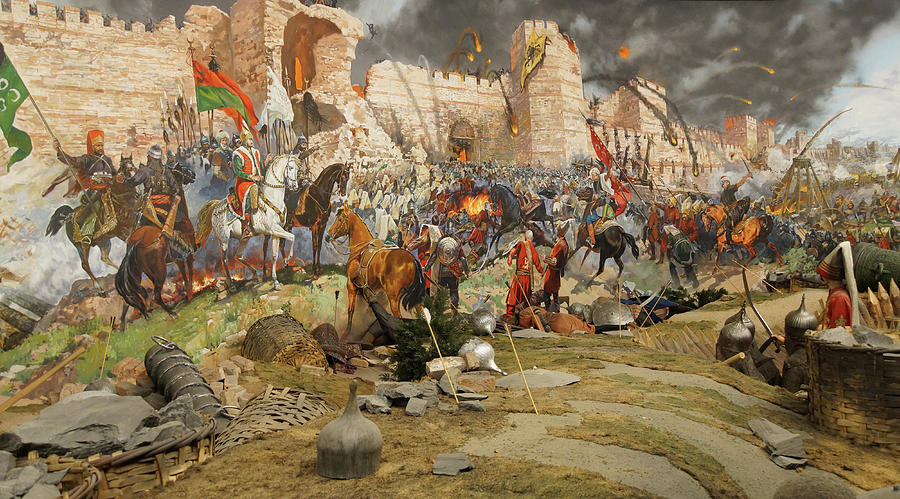
Try to be there for a performance by the Janissary Band, for many visitors, the highlight of the museum: The Janissary Band “Mehter Takımı”, the world’s oldest military band, blaringly offers concerts of march music in traditional uniforms each afternoon from 3pm to 3:45 pm. The Ottomans were the first to use musicians in military campaigns and to integrate music into the life and work of the army.
After a town had been conquered, the Mehter preceded the conquering Ottoman commander on a procession through the town, playing slow-cadence marches in exotic minor modes. The boom of kettledrums, invented by the Mehter, the wail of oboes and clash of cymbals, (another Turkish invention) was meant to glorify the conquest and impress upon the populace that they were now part of an entirely different civilization.
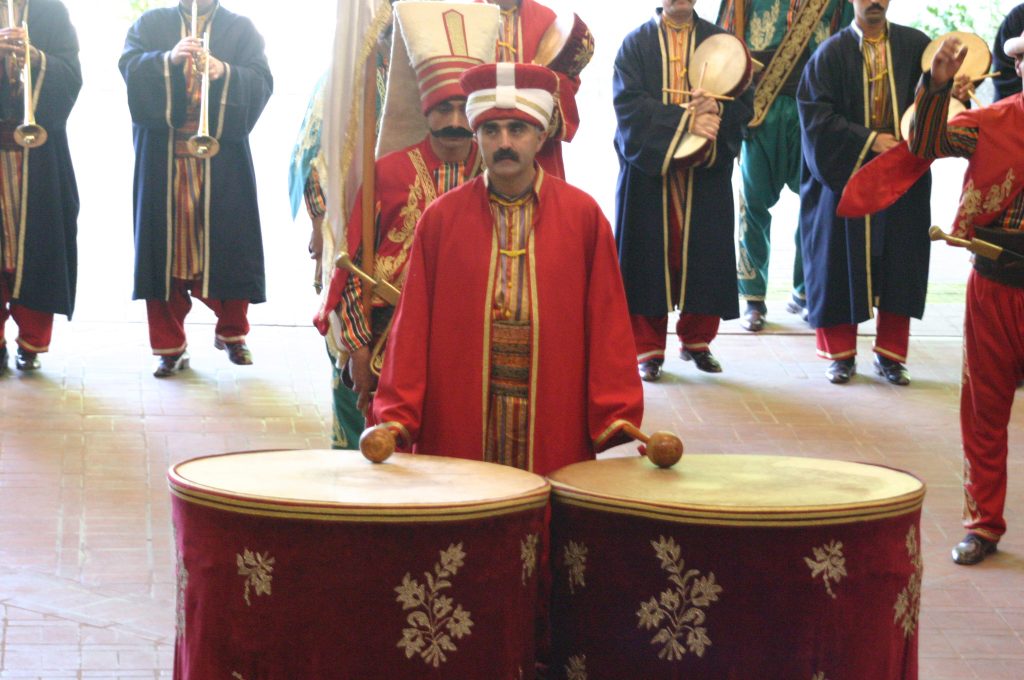
Istanbul Naval Museum
located at Beşiktaş ( easy access by tram)on the waterfront below Taksim, shows the evolution of naval history for the last millennium
The museum’s original building houses exhibits including ‘The Navy in the Turkish Republic’ and ‘Cartography and Navigational Instruments’; the latter focuses on the achievements of the 16th-century cartographer Piri Reis.

More ideas for exploration
The Blue Mosque (Sultanahmet) & Hagia Sophia (Ayasofya) are well-known and are part of the traditional tour of Istanbul’s ancient sites. But there are many other mosques deserving a visit. Here’s an overview of my favorites, over 20 years of visits to this city.
Download royalty-free images of Istanbul
Order prints, greeting cards, clothing, and other merchandise
Our latest small group tours